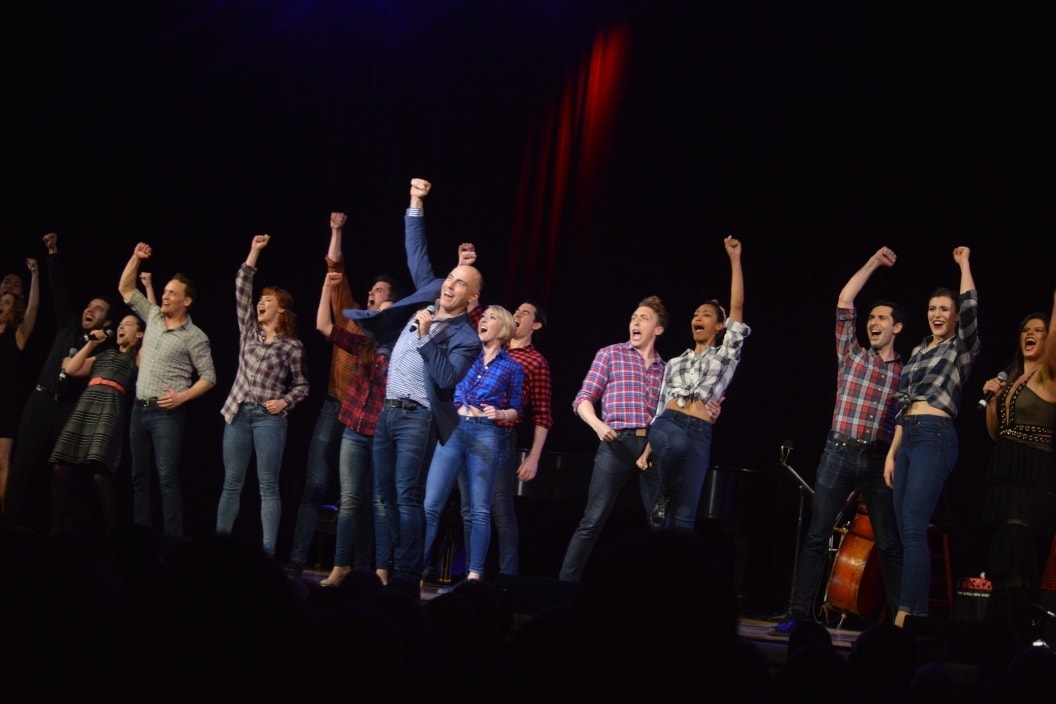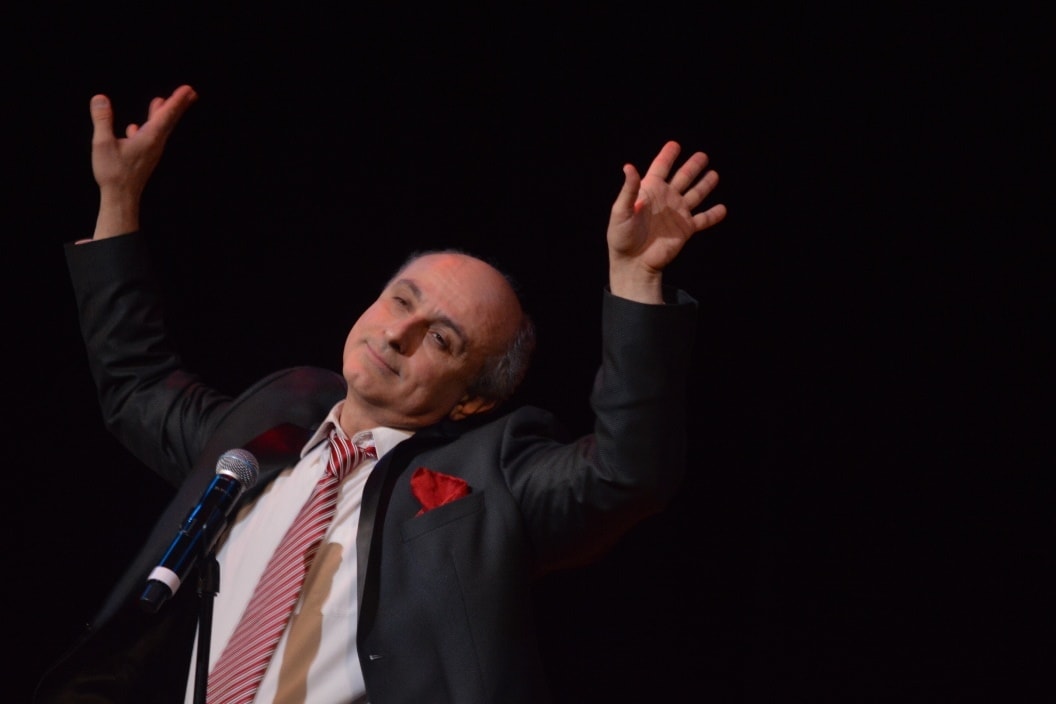In the nineteenth season’s second installment of Broadway by the Year: Broadway Musicals of 1943 & 1951, director and host Scott Siegel took audiences on a retrospective journey along the Great White Way from the midst of World War II to a post-war year in the Truman administration. Keeping with the signature style of the series, an assortment of songs from select shows that made their Broadway debuts in the two featured years were performed by a roster of present-day Broadway luminaries and emerging talents, and contextualized by Siegel’s illuminating commentary between numbers, for an eminently enjoyable and informative trip down memory lane for the elder members of the audience and an introduction to the best of Broadway’s Golden Age for the younger.

Act I highlighted the musicals of 1943 – when, Siegel noted, the average price for a Broadway ticket was $4.40! – with a preponderance of songs from Rodgers and Hammerstein’s quintessential mid-century American blockbuster Oklahoma! (the latest revival of which is now in previews at Circle in the Square Theatre and set to open on April 7). The extraordinary William Michals got the evening off to a rousing start with his unsurpassed rendition of “Oh, What a Beautiful Mornin’,” performed without a microphone, as it would have been done at the time. He didn’t need a mic; his rich, full-bodied, pitch-perfect baritone filled the hall and brought down the house. Michals also closed the first act with an ebullient lead vocal on the title song from Oklahoma!, for which he was joined on stage by the Broadway by the Year Chorus and the Broadway by the Year Dance Troupe, clad in plaid shirts and blue jeans and led by BBTY choreographer Danny Gardner. The production number featured high-jumping heel clicks and lasso-twirling, referencing the eponymous locale and capturing the downhome mood of the original show.
In between, Laurel Harris, in her BBTY debut, delivered a rip-roaring “I Cain’t Say No” in a full-out cornpone accent; Rising Stars Matt Weinstein and Madeline Hamlet playfully bickered, moved, and sang their way, as a jealous and quarrelsome young couple, through “All Er Nuthin’”; Robert Cuccioli brought his expressive vibrato and seething emotion to “Lonely Room,” and was well-paired with the mellifluous Jill Paice for an engaging duet of the stand-alone Top 40 hit “People Will Say We’re in Love.” In addition to the six famous show tunes from Oklahoma! were Cole Porter’s “Something for the Boys” from the musical of the same name starring Ethel Merman, belted out in true Merman fashion by Laurel Harris, and three lesser-known songs from One Touch of Venus by Kurt Weill (music) and Ogden Nash (lyrics), with unforgettable performances of “I’m a Stranger Here Myself” by the sultry Oakley Boycott (costumed in authentic ‘40s-style glamour), a heartfelt and compelling “Speak Low” by the suave and elegant Darius de Haas, and Stephen DeRosa’s amusing and spirited “Very, Very, Very.”

Following the intermission, Siegel joked that eight years had passed and it was now 1951, World War II was over (“We won!”), the New Jersey Turnpike was built, and the economy was shaky, with even the longest-running shows on Broadway losing money, except for Rodgers and Hammerstein’s “The King and I,” which not only recouped its investment, but made a profit. It was represented by Darius de Haas’s romantic, intimate, and dreamy delivery of “I Have Dreamed,” “We Kiss in a Shadow” by Rising Star Dongwoo Kang (who appeared in a recent touring production of the show), and a choreographed performance of “Shall We Dance” by Kelly Sheehan and the Broadway by the Year Dance Troupe.
Other noteworthy numbers from 1951 were “Wand’rin Star,” sung to perfection by “America’s baritone” William Michals in his powerfully resonant voice, and an impassioned “They Call the Wind Mariah” by Robert Cuccioli (both from Lerner and Loewe’s Paint Your Wagon). There were also selections from the lesser-known shows Flahooley by Fain, Harburg, and Saidy (“Here’s to Your Illusions” beautifully sung by Jill Paice); Schwartz, Fields, Abbott, and Smith’s A Tree Grows in Brooklyn, based on Betty Smith’s best-selling novel (the ballad “Make the Man Love Me” by Paice and “I’m Like a New Broom,” performed by the charming song-and-dance man Gardner, using an actual broom as his partner). The show (marred only by a couple of momentary pauses for forgotten lyrics in Act I) closed with a catchy audience sing-along to the Yiddish folk song “Chi-Ri-Bim” from Bagels and Yox, with the hilarious Stephen DeRosa leading the full company and the audience, leaving everyone clapping to the beat and to another entertaining production in the series.
There are two more chances to catch this season’s installments of Broadway by the Year, back at The Town Hall with Scott Siegel on May 20 (featuring 1965 and 1978) and June 17 (1987 and 2015). If you’re a theater-lover and aficionado of the musical history of the Great White Way, it’s the perfect way to revisit the iconic shows and songs of the past with the stars of today, and to learn more about them from Siegel’s fascinating research and delightful anecdotes.
Running Time: Approximately one hour and 55 minutes, including an intermission.
Broadway by the Year: Broadway Musicals of 1943 & 1951 played Monday, March 25, 2019, at The Town Hall – 123 West 43rd Street, New York City. For information and tickets to upcoming shows, call (800) 982-2787, or go online.





